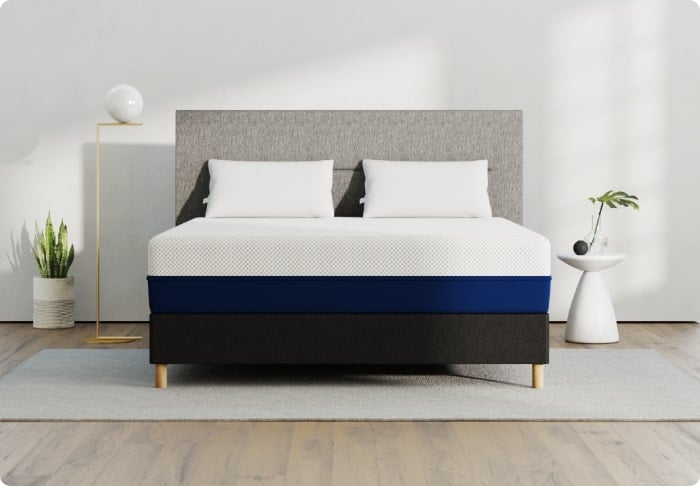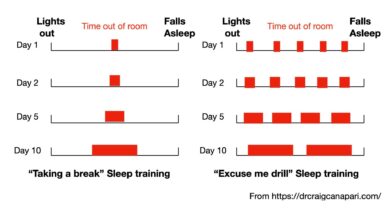Best Sleeping Positions for Gallbladder Pain Relief (2025 Guide)

Quick answer: Left-side sleeping is the best position for gallbladder pain because it reduces pressure on the organ and improves bile flow. Avoid right-side sleeping, which compresses the gallbladder and worsens discomfort. Elevate your upper body 6-8 inches with a wedge pillow and keep your bedroom at 65-68°F for optimal relief. Seek immediate medical attention if pain lasts more than a few hours or you develop fever or jaundice.
Powered by Amerisleep, EarlyBird brings together a dedicated team of sleep science coaches, engineers, and product evaluators. We meticulously examine Amerisleep’s family of products using our unique product methodology in Amerisleep’s state-of-the-art laboratory. Our commitment to sustainability is reflected in our use of eco-friendly foam in our products. Each article we publish is accurate, supported by credible sources, and regularly updated to incorporate the latest scientific literature and expert insights. Trust our top mattress selections, for your personal sleep needs.
Key Takeaways
- Left-side sleeping is best: This position reduces pressure on your gallbladder and improves bile flow for immediate pain relief.
- Avoid right-side sleeping: Lying on your right side compresses the gallbladder and can worsen pain significantly.
- Elevate your upper body: Use a wedge pillow or raise your head 6-8 inches to reduce abdominal pressure while sleeping.
- Create a sleep-friendly environment: Keep your bedroom between 65-68°F and use strategic pillow placement for optimal comfort.
- Watch for warning signs: Seek immediate medical help if pain lasts over a few hours, or if you have fever or jaundice.
- Quick links: See why sleeping on your stomach can be bad. Read about sleeping with IBS and sleeping with Crohn’s disease and sleeping with stomach pain.
That sharp pain in your upper right abdomen can turn a peaceful night into hours of tossing and turning. When gallbladder discomfort strikes, finding a comfortable sleeping position becomes crucial for getting the rest you need.
Your body position during sleep directly affects how much pressure sits on your gallbladder, which can either worsen or ease your symptoms. Most people don’t realize that simply changing how they sleep can provide significant relief from gallbladder pain.
The right sleeping position helps reduce discomfort, supports proper bile flow, and gives your body the chance to heal overnight. With gallbladder issues affecting millions of people worldwide, these simple sleeping adjustments could transform your nights.
Discover how to position yourself for better sleep and wake up feeling more refreshed, starting tonight.
What Causes Gallbladder Pain at Night?
- Gallstones blocking bile ducts and gallbladder inflammation (cholecystitis) are the two main causes of gallbladder pain, often triggered by fatty meals.
Gallbladder pain most often comes from
gallstones
which are hard deposits that form in your gallbladder. These stones can block the tubes that carry bile from your gallbladder to your digestive system.
Your gallbladder can also become inflamed or infected, causing a condition called
cholecystitis
that brings severe pain. Eating fatty or greasy foods often triggers gallbladder attacks because these meals force your gallbladder to work harder.
People who are overweight, over 40 years old, or have a family history of gallbladder problems face higher risks for developing these painful conditions.
Common Symptoms to Watch For
The main sign of gallbladder problems is a sharp pain in your upper right abdomen that might spread to your back or right shoulder. This pain typically starts suddenly, gets worse quickly, and can last from 30 minutes to several hours.
You might also feel nauseous, vomit, or notice changes in your digestion like bloating after meals. Many people experience gallbladder attacks at night or after eating fatty foods.
Fever and yellowing skin (jaundice) point to more serious gallbladder problems that need immediate medical help.
Who Is at Higher Risk?
Certain factors increase your likelihood of developing gallbladder problems. Understanding these risk factors helps you recognize symptoms early and take preventive steps.
Age and Gender Factors
Your risk
increases
significantly after age 40, with gallstone formation becoming more common with each decade. That said, recent research
suggests
teenagers and young adults are more susceptible now to gallstones than previous generations were.
Women
experience
gallbladder problems
two to three
times more often than men, particularly during childbearing years when estrogen levels fluctuate.
Pregnancy
raises
your risk
due to
hormonal changes that slow gallbladder emptying and increase cholesterol in bile. Multiple pregnancies compound this effect over time.
Weight and Diet Connections
Obesity is one of the strongest risk factors for gallbladder disease. Excess body weight increases cholesterol production in your liver, which can lead to gallstone formation.
Rapid weight loss paradoxically raises your risk as well. Losing more than three pounds per week causes your liver to release extra cholesterol into bile, while reduced food intake means your gallbladder empties less frequently.
Diets high in refined carbohydrates and low in fiber contribute to gallstone development. Your body needs adequate healthy fats and fiber to maintain proper bile composition and gallbladder function.
Genetic and Health Factors
Family history plays a significant role in gallbladder disease. If your parents or siblings have had gallstones, your risk increases substantially.
Certain medical conditions elevate your risk, including
diabetes
liver disease,
and
blood disorders
like
sickle-cell anemia.
These conditions affect bile composition or gallbladder emptying patterns.
People with
Native American
or
Mexican-American
heritage
face
higher gallstone rates due to genetic factors affecting cholesterol metabolism. This ethnic predisposition means extra vigilance about symptoms and regular checkups become even more important.
Why Sleeping Positions Matter
How you position your body at night directly affects the pressure placed on your gallbladder and surrounding organs. The wrong sleeping position can compress your gallbladder, block bile flow, and make pain significantly worse.
Your body naturally shifts during sleep, but when you have gallbladder pain, certain positions can provide relief by taking pressure off the inflamed area. Sleeping positions also affect how quickly food moves through your digestive system, which impacts gallbladder function.
Finding the right position helps your muscles relax around the painful area, allowing for better circulation and healing while you sleep.
Which Sleeping Positions Help Gallbladder Pain?
- Left-side sleeping is best for gallbladder pain as it takes pressure off the organ, while right-side sleeping should be avoided.
Your sleeping position plays a crucial role in managing gallbladder pain at night. The right position can reduce pressure on your gallbladder and help you get the rest you need to heal.
Left Side Sleeping Is Your Best Option
Sleeping on your left side takes pressure off your gallbladder and allows better bile flow.
- Natural positioning: Your gallbladder sits on your right side, so lying on your left keeps weight off this sensitive organ.
- Improved drainage: This position helps bile flow more easily through your digestive system without blockage or backup.
- Pain reduction: Many people report immediate relief when switching from other positions to left-side sleeping during a gallbladder attack.
Try placing a pillow between your knees while side-sleeping to keep your spine aligned and reduce additional pressure on your abdomen.
Why You Should Avoid Right Side Sleeping
Sleeping on your right side puts direct pressure on your gallbladder and can worsen pain significantly.
- Direct compression: Your body weight presses directly on your gallbladder when lying on your right side.
- Restricted flow: This position can pinch bile ducts and prevent normal drainage from your gallbladder.
- Increased inflammation: The added pressure might increase swelling and irritation in an already sensitive area.
Even if you normally prefer right-side sleeping, switch to your left side whenever you experience gallbladder discomfort.
Back Sleeping with Proper Support
Back sleeping can work well for gallbladder pain if you use the right support to reduce abdominal pressure.
- Elevated position: Raising your upper body with pillows or an adjustable bed reduces pressure on your digestive organs.
- Neutral alignment: This position keeps your spine straight and prevents twisting that might aggravate gallbladder pain.
- Even distribution: Weight spreads more evenly across your body instead of concentrating on one side.
Use a wedge pillow or stack regular pillows to raise your head and shoulders about 6-8 inches for the most comfortable back-sleeping experience.
Modified Fetal Position Benefits
A slightly curled position can provide comfort when gallbladder pain flares up at night.
- Gentle flexing: Bringing your knees slightly toward your chest relaxes abdominal muscles and reduces tension.
- Pressure relief: This natural position takes strain off your internal organs and digestive system.
- Comfort balance: You get the benefits of side-sleeping while adding extra relief through the bent-knee position.
For best results, try this position on your left side with a small pillow between your knees and avoid tightly curling up, which can create new pressure points.
How Can You Make Your Bed More Comfortable for Gallbladder Pain?
- Use a wedge pillow to elevate your upper body 6-8 inches and place a pillow between your knees for optimal spine alignment.
Your bed setup can make a huge difference in how well you sleep with gallbladder pain. The right combination of pillows, sleep environment, and mattress support helps your body relax and reduces pressure on sensitive areas.
Using Pillows for Better Support
Strategic pillow placement can dramatically reduce gallbladder discomfort while you sleep.
- Body pillows: A long body pillow supports your entire side when in the recommended left-side position.
- Knee support: Placing a pillow between your knees aligns your hips and reduces twisting in your abdomen.
- Elevation help: A wedge pillow under your upper body decreases pressure on your digestive system and a wedge pillow helps prevent acid reflux.
Try different pillow combinations until you find what works best for your specific pain pattern and preferred sleeping position.
Creating the Ideal Sleep Environment
Your bedroom conditions directly impact how well you sleep through gallbladder discomfort.
- Temperature control: A cool room between 65-68°F helps you fall asleep faster and stay asleep despite pain.
- Darkness matters: Blackout curtains or an eye mask block light that might wake you during sensitive sleep periods.
- Noise reduction: Block noise in the bedroom that could wake you once you’ve finally found a comfortable position.
Making these simple changes to your sleep environment gives your body the best chance to rest despite gallbladder discomfort.
Mattress Considerations for Pain Relief
Your mattress type and condition significantly affect pressure points and support for gallbladder pain.
If you can’t replace your mattress right away, consider adding a quality mattress topper designed for pressure relief to improve your current sleep surface.
What Other Strategies Provide Nighttime Gallbladder Relief?
Managing gallbladder pain involves more than just finding the right position to sleep. These additional nighttime strategies can help reduce discomfort and improve your chances of getting restful sleep.
Warm Compress Techniques
A warm compress relaxes muscles and eases gallbladder pain before bedtime. Place a heating pad or hot water bottle wrapped in a thin towel on your upper right abdomen for 15-20 minutes.
Keep the temperature warm but not hot enough to burn your skin. The heat works by increasing blood flow to the area, which helps relax muscle spasms and can reduce inflammation around your gallbladder.
Many people find this simple technique provides enough relief to help them fall asleep more comfortably.
But never fall asleep with the heating pad on—this prevents burns and fire hazards.
Relaxation Methods Before Bed
Stress makes gallbladder pain worse, so calming your mind and body before sleep is important. Try deep breathing exercises where you inhale slowly through your nose for a count of four, hold for one second, then exhale through your mouth for a count of six.
Progressive muscle relaxation involves tensing and then relaxing each muscle group in your body, starting from your toes and working up to your head. Gentle stretching that doesn’t compress your abdomen can also help release tension that might aggravate your gallbladder.
These relaxation techniques lower stress hormones in your body that could otherwise intensify pain signals and make falling asleep more difficult.
Timing of Meals and Medications
What and when you eat directly affects your gallbladder function and comfort during sleep. Eat your last meal at least three hours before bedtime to give your digestive system time to process food before you lie down.
Avoid fatty, fried, or spicy foods in your evening meal as these force your gallbladder to work harder and often trigger pain. Stay hydrated throughout the day but reduce fluids in the two hours before bed to minimize nighttime bathroom trips that interrupt sleep.
If your doctor has prescribed medications for your gallbladder or for pain relief, ask about the optimal timing to take them for maximum overnight effectiveness.
When Should You See a Doctor for Gallbladder Pain?
Gallbladder pain sometimes signals a serious condition that needs professional care. Knowing when to call your doctor and what treatments might help can save you from complications and provide lasting relief.
Warning Signs That Require Attention
Certain symptoms with gallbladder pain indicate you need immediate medical help.
- Severe pain: Pain that lasts more than a few hours or feels unbearable needs emergency evaluation.
- Fever presence: A temperature above 100.4°F along with gallbladder pain suggests infection that requires antibiotics.
- Skin changes: Yellowing of your skin or eyes (jaundice) points to a serious bile duct blockage.
Don’t wait to seek help if you notice these warning signs, as gallbladder problems can quickly become dangerous when complications develop.
Treatment Options Your Doctor May Suggest
Your doctor has several effective treatments for ongoing gallbladder issues.
- Medication approach: Pain relievers, anti-inflammatories, or medications that dissolve small gallstones might be prescribed for mild cases.
- Surgical solutions: Gallbladder removal (cholecystectomy) offers permanent relief and is one of the most common surgeries performed.
- Dietary guidance: Your doctor may refer you to a nutritionist to develop an eating plan that reduces gallbladder attacks.
Most people recover quickly from gallbladder treatments and find their quality of life improves dramatically once the problem is addressed.
Long-term Management Strategies
Living well after gallbladder problems requires ongoing healthy habits.
- Weight management: Maintaining a healthy weight reduces your risk of developing new gallstones or other digestive issues.
- Fat adjustment: Gradually reintroducing fats into your diet helps your body adapt, especially after gallbladder removal.
- Regular checkups: Following up with your doctor ensures any new digestive symptoms get prompt attention.
Your body can function well without a gallbladder, but you may need to make some lasting lifestyle changes to stay comfortable and avoid future digestive problems.
How Do You Build Healthy Sleep Habits with Gallbladder Issues?
Establishing good sleep habits strengthens your body’s natural healing processes. These consistent practices can help you manage gallbladder pain and improve your overall sleep quality.
Building a Consistent Routine
A regular sleep schedule trains your body to rest better, even when dealing with gallbladder discomfort.
- Bedtime consistency: Going to bed and waking up at the same times every day helps regulate your body’s internal clock.
- Wind-down period: Setting aside 30 minutes before bed for calming activities signals your brain that sleep time approaches.
- Morning light: Exposure to natural light soon after waking up strengthens your body’s sleep-wake cycle.
Your body responds positively to these predictable patterns, making it easier to fall asleep despite occasional gallbladder pain.
Dietary Choices That May Help
What you eat directly impacts both your gallbladder health and sleep quality.
- Anti-inflammatory foods: Berries, leafy greens, and fatty fish help reduce inflammation throughout your digestive system.
- Fiber intake: Foods high in fiber help maintain healthy digestion and reduce strain on your gallbladder.
- Trigger avoidance: Keeping a food diary helps identify which foods worsen your symptoms so you can avoid them.
Making these dietary adjustments gradually improves both your gallbladder function and your ability to sleep through the night comfortably.
Lifestyle Adjustments for Better Sleep
Small changes to your daily habits can significantly improve sleep while managing gallbladder issues.
- Activity timing: Gentle exercise promotes better sleep when done earlier in the day without triggering gallbladder pain at night.
- Stress reduction: Regular practices like mental relaxation exercises and simple stretches help lower stress hormones that can worsen pain.
- Screen limits: Turning off electronic devices at least one hour before bed helps your brain produce sleep hormones naturally.
These adjustments work together to create the ideal conditions for quality sleep, giving your body the rest it needs to heal and manage gallbladder discomfort.
What Are Your Next Steps for Gallbladder Pain Relief?
Taking control of gallbladder pain starts with practical steps you can implement tonight. This action plan gives you specific tasks to improve your sleep quality and manage discomfort more effectively.
Daily Sleep Position Checklist
Track and optimize your sleeping positions to reduce gallbladder pain.
- Position priority: Always try the left side position first when dealing with gallbladder discomfort.
- Pillow placement: Keep support pillows within reach to quickly adjust your position during the night.
- Comfort check: Scan your body for tension points before falling asleep and adjust until you feel relief.
Create a simple bedside reminder card with these position tips until they become second nature.
Setting Up Your Bedroom for Pain Relief
Transform your bedroom into a healing space designed to minimize gallbladder discomfort.
- Elevation station: Arrange your bed with a wedge pillow or bed risers under the headboard for proper upper body elevation.
- Temperature control: Set your thermostat between 65-68°F to promote deeper, more restful sleep.
- Easy access: Keep pain relief items like heating pads and medications within arm’s reach of your bed.
Just a few strategic changes to your bedroom setup can dramatically improve your comfort level throughout the night.
Starting a Gallbladder Symptom Journal
Recording your symptoms helps identify patterns and triggers that affect your gallbladder.
- Pain tracking: Note when pain occurs, how severe it is, and which positions provide relief.
- Food connections: Write down meals and snacks to spot connections between certain foods and pain flare-ups.
- Sleep quality: Rate your sleep quality each morning to see improvements as you implement changes. You can also note bedtime and wake time and other points a sleep diary usually covers.
A simple notebook by your bedside makes this tracking process easy and provides valuable information for both you and your doctor.
Planning Your Doctor Consultation
Prepare for medical appointments to get the most helpful guidance for your situation.
- Question list: Write down specific questions about sleeping positions, pain management, and treatment options.
- Journal summary: Bring your symptom journal to show patterns your doctor might not otherwise notice.
- Support person: Consider bringing someone to help remember the doctor’s advice about nighttime pain management.
Coming prepared to your appointment helps ensure you receive personalized advice that addresses your specific gallbladder and sleep challenges.
FAQs
Can I sleep on my stomach if I have gallbladder pain?
Stomach sleeping puts pressure on your abdomen and can worsen gallbladder pain, so it’s best to avoid this position.
How quickly will changing my sleep position help with gallbladder pain?
Many people notice immediate relief when switching to left-side sleeping during a gallbladder attack.
Should I use ice or heat for gallbladder pain at night?
Heat works better for most gallbladder pain because it relaxes muscles and improves blood flow to the area.
Can I still sleep comfortably after gallbladder removal surgery?
Yes, most people sleep more comfortably after recovery from gallbladder surgery because the source of pain has been removed.
What foods should I avoid before bedtime if I have gallbladder issues?
Avoid fatty, fried, and spicy foods in the evening as these make your gallbladder work harder and often trigger nighttime pain.
How many pillows should I use for proper elevation with gallbladder pain?
Use enough pillows to raise your upper body 6-8 inches, which typically means 2-3 standard pillows or one wedge pillow.
Can stress make my gallbladder pain worse at night?
Yes, stress increases inflammation and muscle tension, which can significantly worsen gallbladder pain and disrupt your sleep.
Conclusion
Finding relief from gallbladder pain at night starts with simple changes to how you sleep. Left side sleeping takes pressure off your gallbladder and often provides immediate comfort during painful episodes.
Your bedroom setup, from pillow arrangements to mattress type, plays a key role in managing discomfort throughout the night. Small adjustments like using warm compresses before bed and timing your meals properly can make a big difference in how well you sleep.
Pay attention to warning signs that require medical help, and don’t hesitate to call your doctor if pain becomes severe or new symptoms develop. Creating healthy sleep habits supports your body’s natural healing processes and helps you cope better with gallbladder issues.
With the right sleeping position, supportive environment, and consistent routine, you can get the restful sleep you need even while dealing with gallbladder discomfort.



